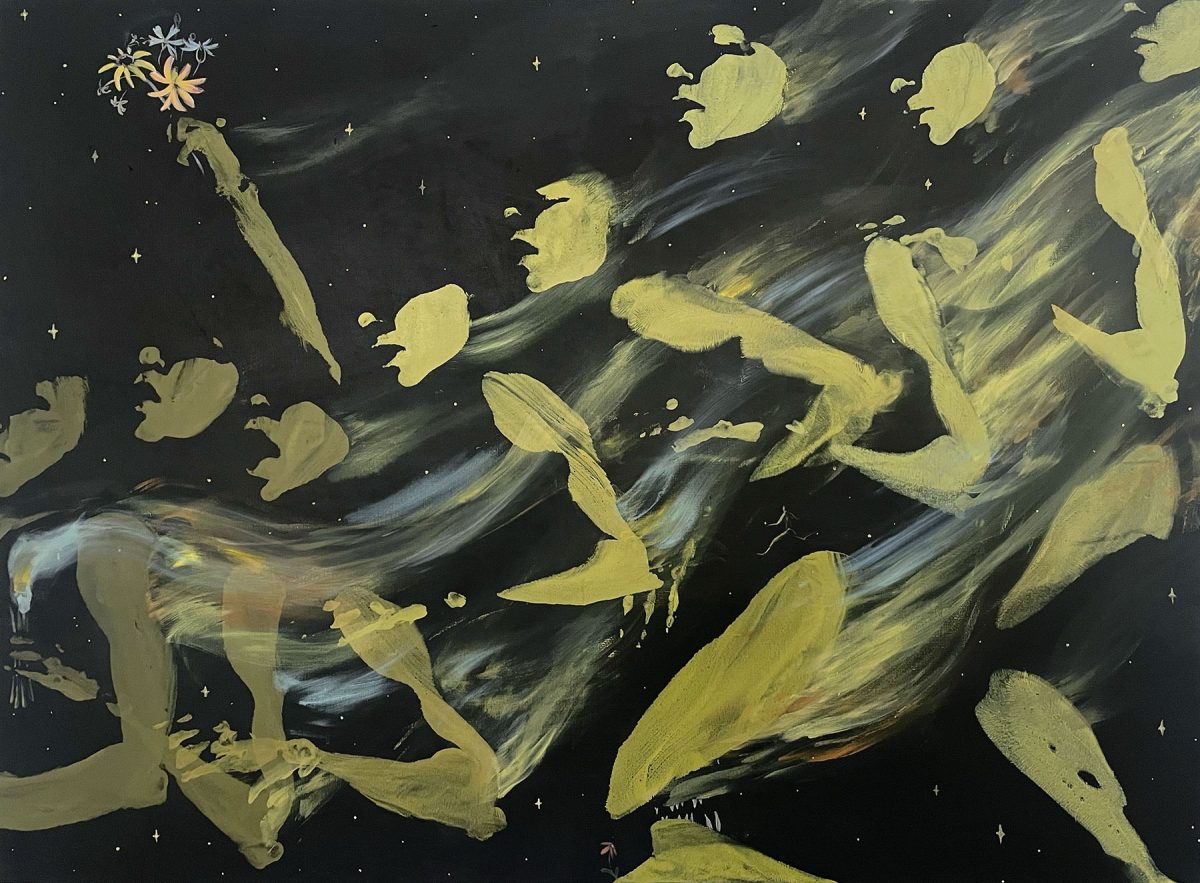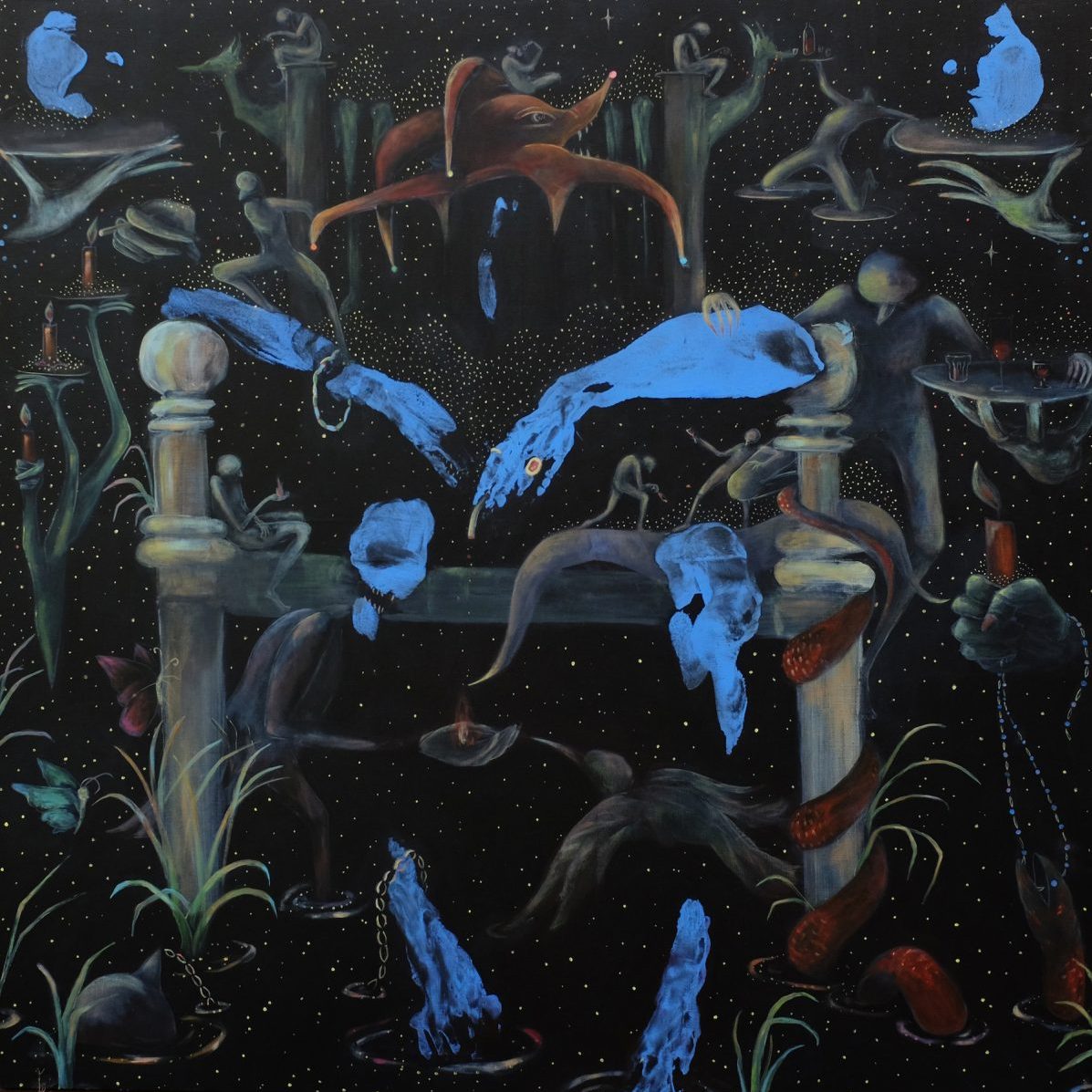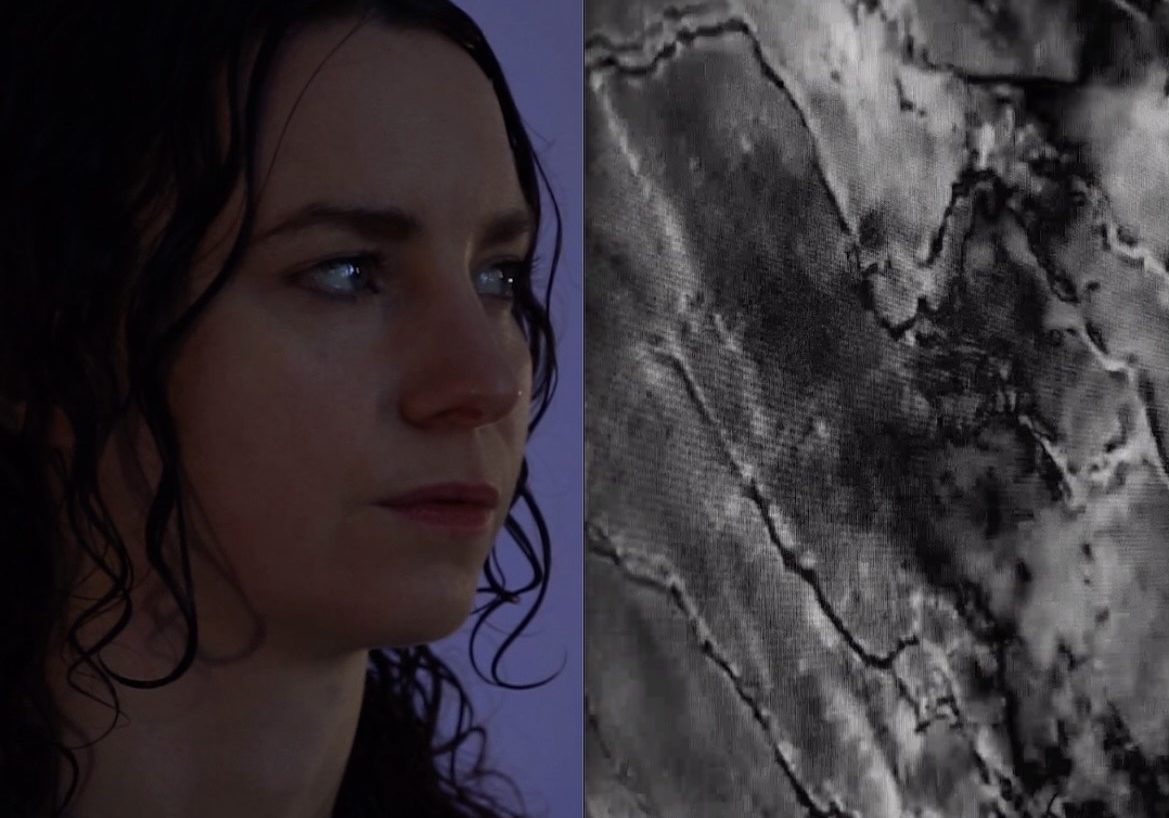Meet the Artist // Emilia Franciszka Jechna
Can you give me an introduction about yourself?
Yes. I don’t come from Berlin, but I’ve lived in Berlin for three years now. I’m doing my second residency here. I graduated in art education with an emphasis on art therapy and then did a Master’s in painting. Apart from painting, I also do set design for film.
I mainly paint on black backgrounds, and it’s been five years since I started imprinting human bodies, and I’m pretty excited about it still. So, it’s basically the series that I still work on and invite more and more people to collaborate on it.

It’s nice and communal – it’s like inviting the viewer into your art.
Yeah, it’s cool, it’s really, really fun. I had to learn some things along the way too – some people think if they imprint themselves, the painting’s going to be theirs. I found this a bit challenging, because for me, it was obvious that it’s probably not going to be theirs, because it’s my work, you know? It’s not just something I can give away.
Now I try to let them know. But it’s nice, actually, when I think about it – because as I said, they contributed a lot.
Can you tell me the story of how you started painting with a black background?
I was painting a big painting, and I didn’t like it. It was a very long time ago, like eight years ago, when I was just starting my Bachelor. I like it when I see the pictures, but back then I didn’t like it, and I decided to overpaint it with black, because to me it was the easiest color that would be sure to cover all of the other colors.
So that was the only reason why I chose black – I wanted to be sure that nothing would be visible. But I left one little window that I didn’t overpaint, and it looked very cool that there was this window to a crazy world. I loved the idea, it looked really nice. It was like you were looking through a little keyhole.
I added stars too, even though my teacher would have killed me if she knew I was adding stars on every painting – because for her it was the easy way to just cover your background with anything. But I just think it really works on a black background. It gives you a feeling of space. Because my paintings are kind of flat, you know? So the stars give you some sense of distance.

For your references to mythology – is that something you’ve always been interested in or wanted to do?
Yeah – I was in Catholic school for ten years, and I was raised on biblical stories in a way. I appreciate them, even though I really don’t support the institution now. It made my imagination as a child really rich. From the Bible and from Greek mythology – for me, it’s more that we cannot deny that our culture is based on these stories. And I like to kind of rewrite them and think about them differently. You know, maybe the interpretation that we are taught is not the only one that was right. So I just like playing with that.
It was like, when you believe in these stories as well, it kind of transfers to when you’re older and you still have the memories of that in your head, and you want to have your own interpretation because some people chose to write the Bible with certain stories, but it’s still like, who knows what really happened? So we’re always coming up with our own things.
So now that you’re in your second residency in Berlin, do you think anything has changed in your art since you started at SomoS?
That’s a good question, I’m not sure. Definitely, when I was at SomoS, I think I imprinted maybe only one person that wasn’t me. So here, I went much more into the direction of inviting more people. But when it comes to images itself, I think I’m starting to look a little bit more for different backgrounds besides black.
I mean, I know I’ve changed inside. Something is shifting inside. I’m not sure if it’s visible yet outside of what I do, but I’m looking for myself all over again.
Also at SomoS, it felt like everything had to be connected. Here, every painting changes a little bit, so sometimes I feel my core is not as strong. But there was this Polish psychiatrist, Kazimierz Dąbrowski, who said that basically, we usually believe that when we are fourteen, we go through this ‘F*ck everything’ phase. But actually, he said that we have that repeatedly throughout our lives. So sometimes you just have to kind of erase yourself to go further. And I believe that. So maybe I’m going through the phase again.
I discovered here, for example, that by imprinting my lips and my jaw, they become like a dog’s eye. And now it’s a dog’s face. And when I don’t know what to paint, I usually paint wine, people who drink wine, and falling people.
I love these types of paintings because the more you look at them, the more you see. And you come back another day and see something totally new.
Yeah, I like it too. I like working on that. I like adding. Also, sometimes when you don’t have anything to add, maybe you shouldn’t. But in paintings like this one, you absolutely can, because it doesn’t make any sense from the beginning anyway.
How do you know when you’re done?
I don’t know. I never know. I can make the paintings very detailed. There was one about Adam and Eve. But Eve decided to leave Adam. She was just tired of him constantly claiming she comes from his rib. But when there was any problem, it was only her fault – a bit absurd, right? So I was working on this painting for so long. I was finishing it and the girl I was renting the studio from, came for her stuff. She told me, ‘Emilia, I look at this painting and it’s looked the same for a month now. What are you doing with it?’ She actually helped me finish it because she told me she doesn’t see any difference. Sometimes you just have to set a timer for yourself because you can get so dialed in. And you don’t know when to stop.
So you’re moving, but what else will you be doing after this residency?
I will need to find a new studio. But other than that, I don’t know. I think I need to not have a plan for a bit, because something is shifting in me. I don’t know what’s happening. Maybe I’m fourteen again, I need to think about myself. Start over.











